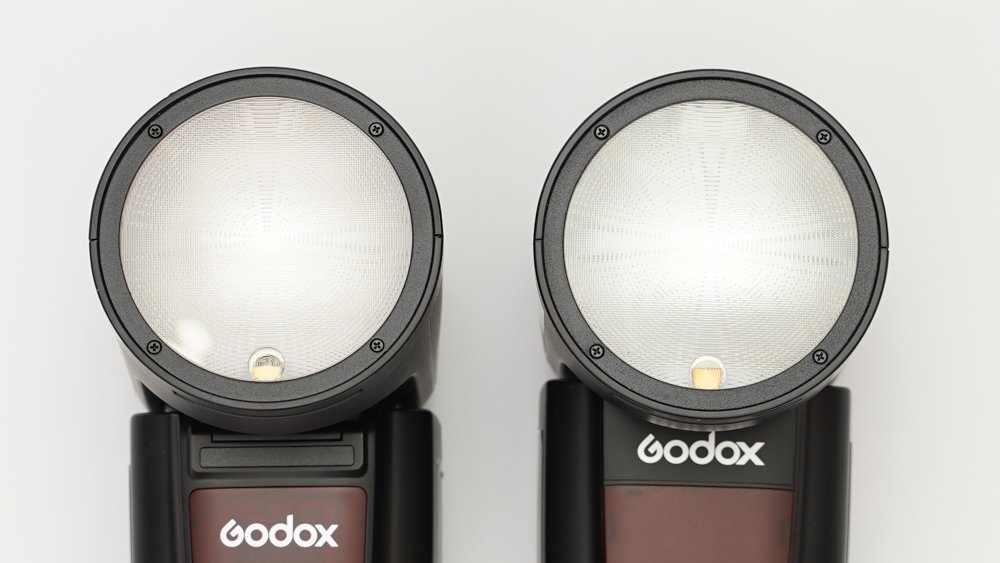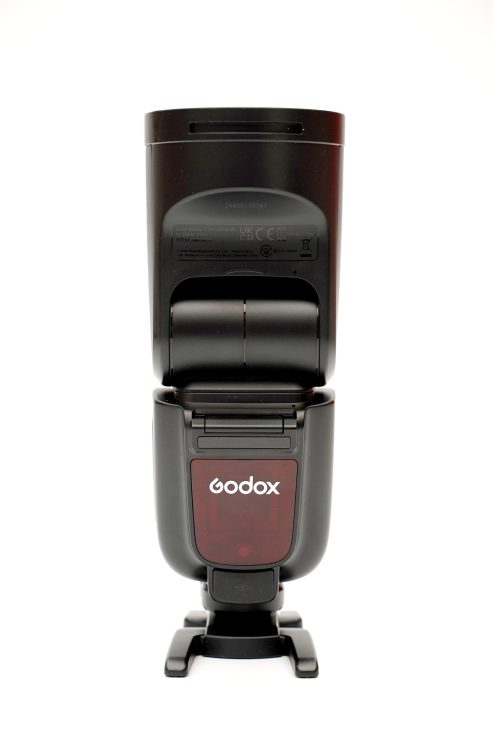
In this article I present and test the newly released Godox V1 Pro studio flash.
From their modest beginnings in 1993, Godox has grown into a key player in the photography industry. Their products are varied, cover many use cases and integrate well together. In recent years, the company has tried to bridge the gap between high-end, purely studio strobes, and lighter but more flexible speedlights.
The new Gopdox V1 Pro is an excellent example of this. At its core, it is a speedlight, or a flash designed to be mounted on a camera. However, it packs many features that are often found on higher-end (and more expensive) products.
Let’s take a look at the V1 Pro to see if it’s a worthy addition to the Godox lineup!
Differences With The V1
The V1 Pro builds on the original V1 (the two will continue to co-exist) and they share many of the same features. You can refer to our V1 review to learn more about it.
The key differences between the two are listed below:
- Slightly larger body with the V1 Pro
- Li-Ion battery pVB30 has a built-in USB-C charging port, does not require an external charger (dimensions and specs otherwise similar to V1’s VC26 battery)
- Dedicated TTL/Manual switch (like on the V860 III)
- Capable of 100 pops at full power before going in overheat protection mode (up from 30)
- Comes with removable forward fill-in flash
- Port for external power pack
- Metal foot for Sony (other brands already had metal feet)
- (Claimed) more neutral color cast
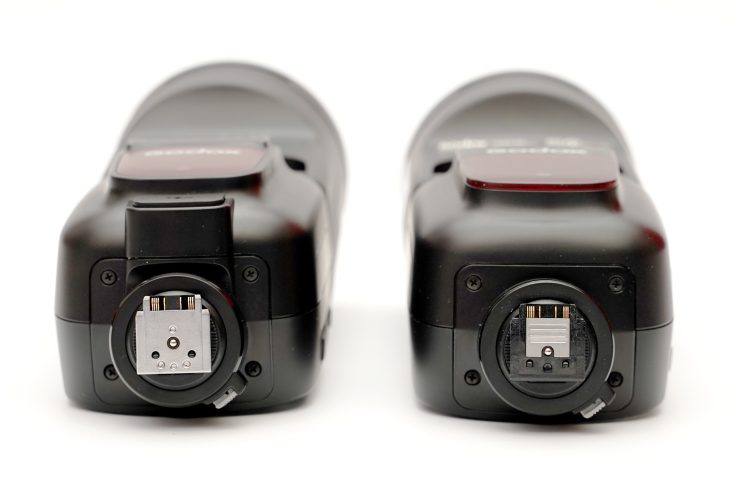
These improvements truly make the V1 Pro a more complete product. On paper, at least, it is deserving of the “pro” label.
V1 Pro : Physical Description
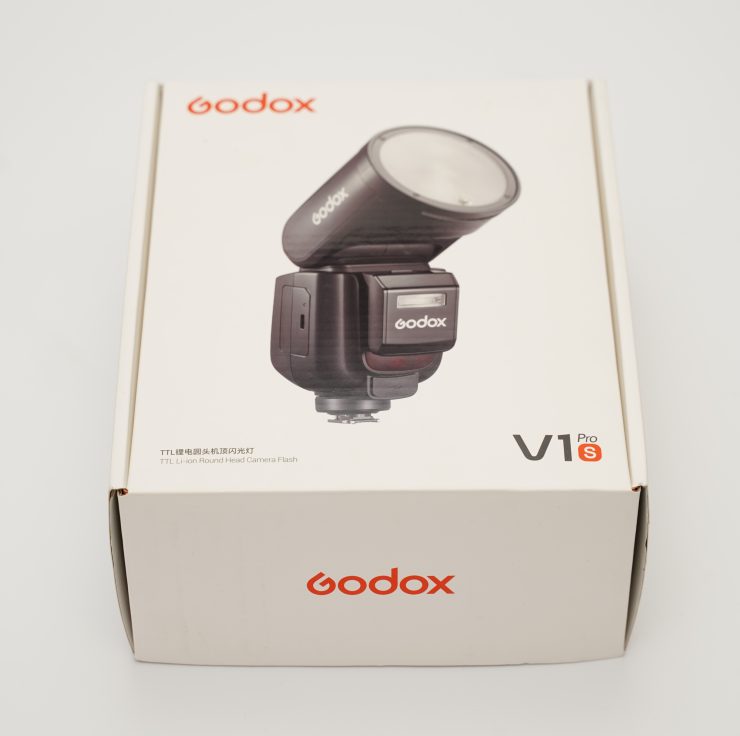
The Godox V1 Pro ships in a box that’s typical for Godox. The flash ships with a soft case, a stand, a USB-C cable and wall charger and the SU-1 detachable fill flash.
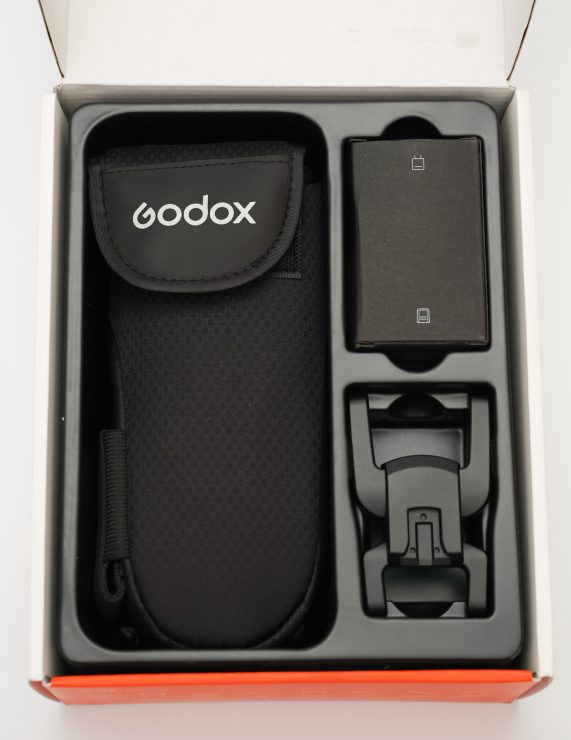
The soft case is a new model for Godox, and includes a side pocket which can store the fill flash or other small items.
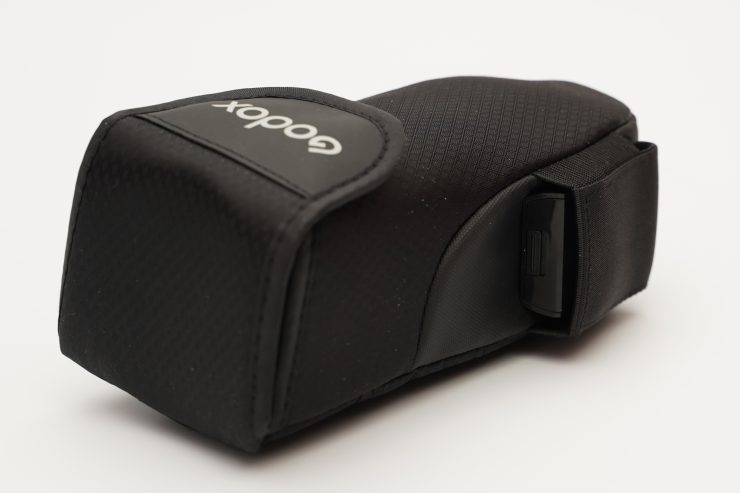
The general physical appearance is very similar to that of the V1 except that the V1 Pro’s main body is taller. The flash has a typical form factor for a speedlight except for the round head. There is a modeling LED light included in the head.
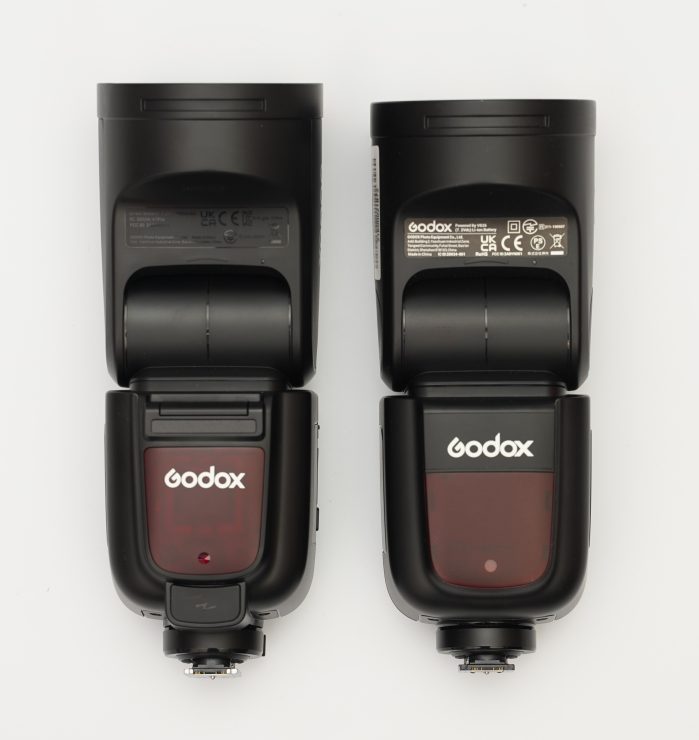
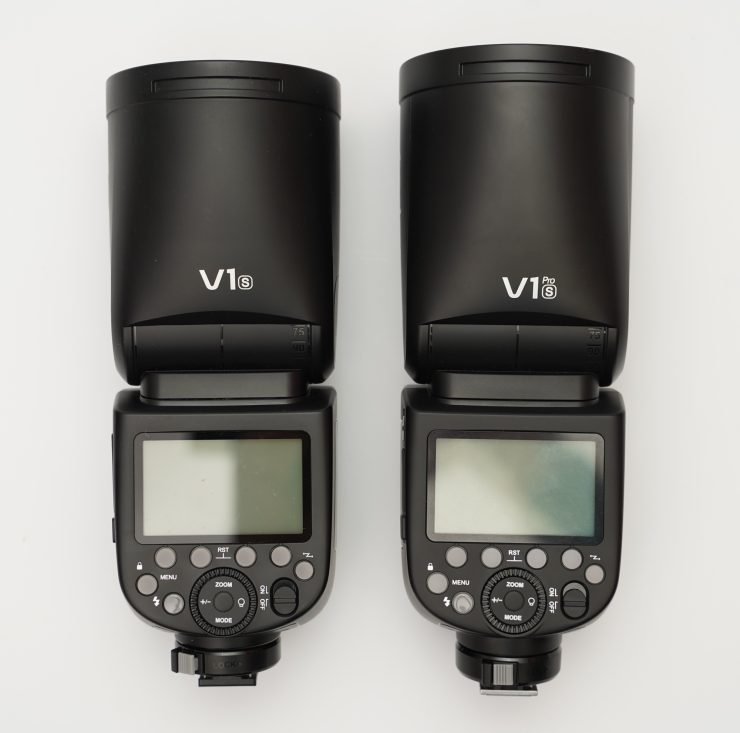
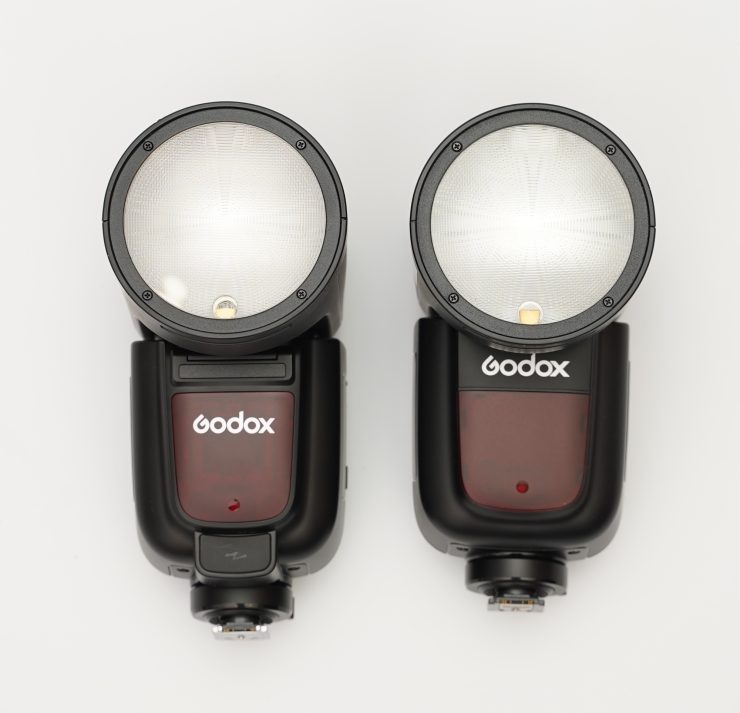
Comparison of the V1 Pro and V1
The front is equipped with a projector for the red AF-assist beam. One new element of the V1 Pro is the presence of a port for an external power source below the red projector.
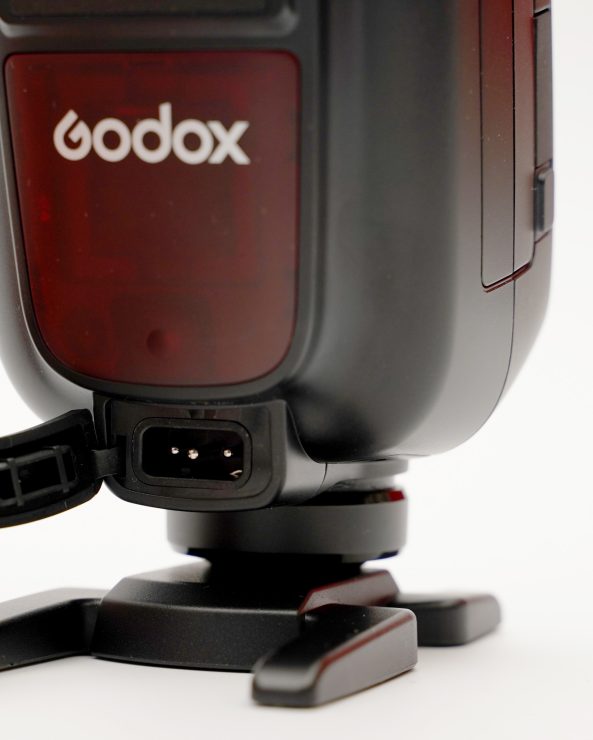
The rear is identical to the V1, V860 III and other Godox flashes. The company tuned its interface some years ago and now essentially re-uses it. Even their remote triggers mostly use the same interface. This makes for consistency regardless of the unit being used.
On the left side (as seen from the rear) is a broad “Godox” print. This side also bears the new TTL/M switch first seen on the Godox V860 III. It is possible to toggle the exposure mode via menus, but this dedicated switch makes things faster for photographers who often switch between the two.
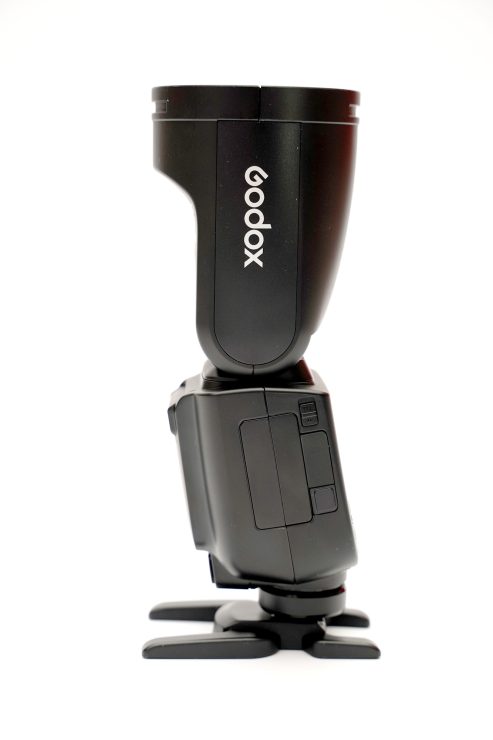
The other side is featureless except the charging port for the battery which is visible. The battery is released from the left side, and slides out from the right. The battery can be charged directly in the V1 Pro, or removed and charged on the side.
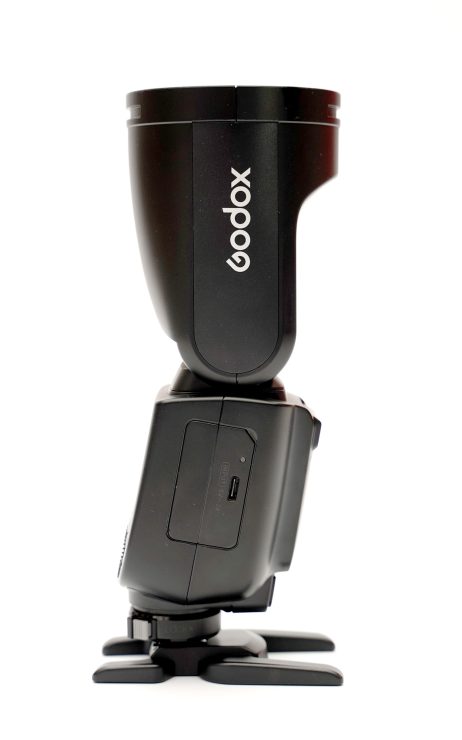
The head can tilt forward, down to -7°, and backwards up to 120°. Most flashes limit themselves to 90° (fully vertical); the backwards tilt makes it much easier, and faster, to bounce the light back and fill a room. The head can of course rotate horizontally as well, covering 330°.
One truly new element of the V1 Pro is the removable SU-1 fill strobe. This small add-on must be pushed towards the rear, then down to lock it into place. It can remain permanently attached if so desired or removed when not in use. It does not cover the AF assist beam when installed.
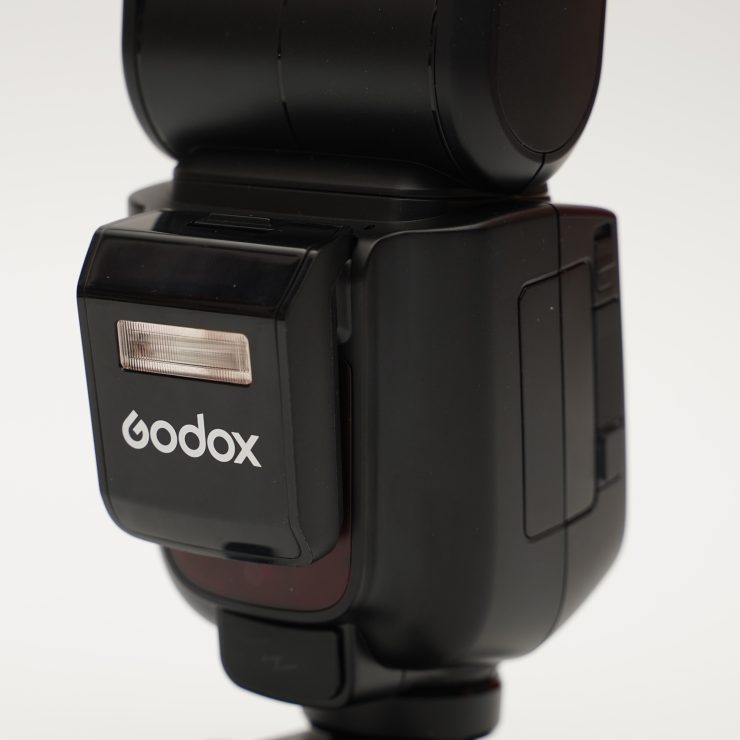
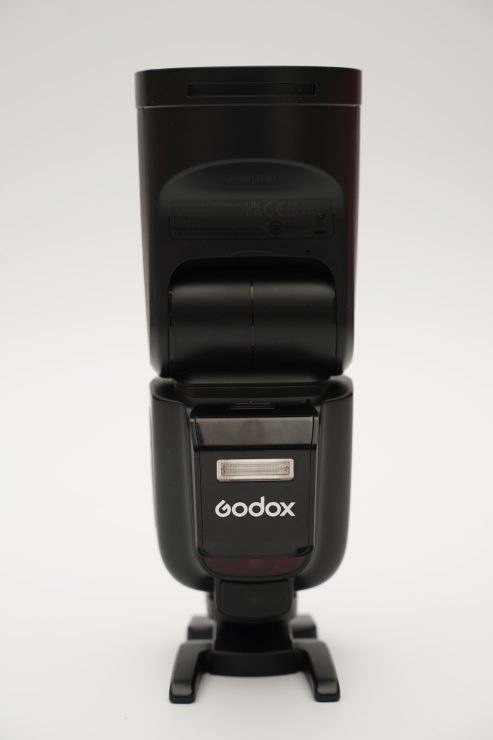
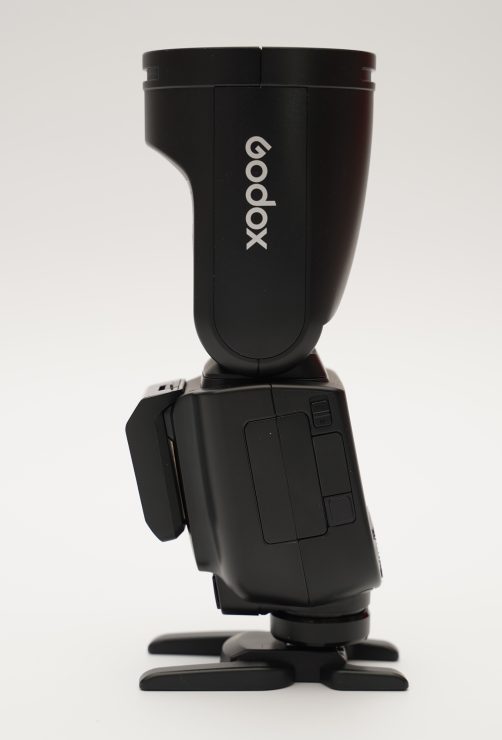
V1 Pro : interface
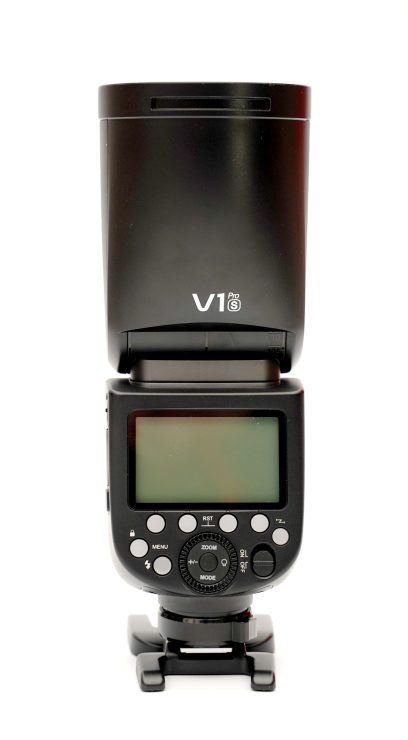
The user interface will be familiar to any seasoned Godox user. New users won’t feel lost: the interface is logical, the four buttons below the screen are dynamic and the screen shows their current usage. The other buttons are logical and self-explanatory. The screen’s backlight changes color depending on the control mode. If the flash is set as a stand-alone unit or a controller for other units, it is lit in blue. If the flash is being triggered by another unit it turns orange.
Removable Forward Flash
The removable flash SU-1 is controlled separately from the main unit. Its menu is accessed by pressing SUB on the main screen. This brings up a sub-menu where the forward flash can be turned on or off and its output power can be set. This flash isn’t TTL-compatible, its power must be set manually. It also won’t fire when the V1 Pro is triggered remotely. This limits its usefulness in a purely “run and gun” mode; its use must be more deliberate.
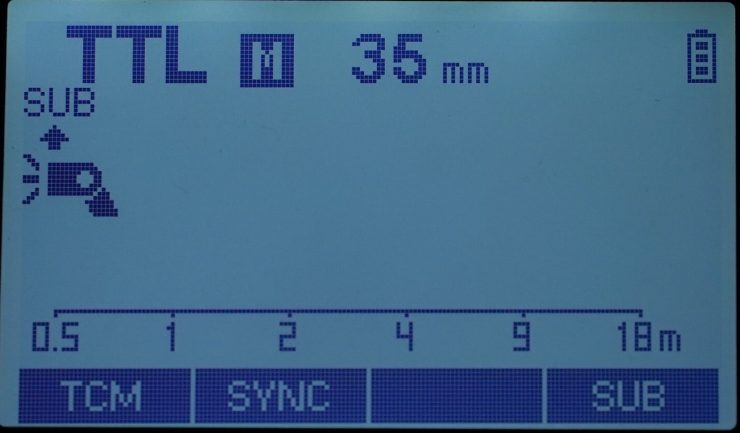
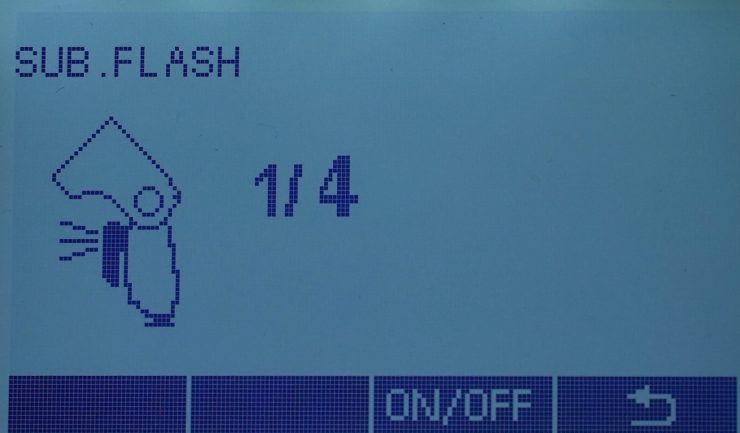
The removable flash will only be active if the main head is raised. If the main head is oriented forward, it automatically de-activates the removable flash. When active, this will show on the screen as seen on the left picture above.
In Use
When mounted on a camera and set in TTL mode, using the V1 Pro is straightforward. It is not different from any other speedlight. Its head zooms from 28mm to 105mm and tilts/rotates on a wide range.

Using the V1 Pro in a studio opens up more possibilities. The speedlight is reasonably powerful and its round head offers a more pleasing light spread in many situations. Its improved color cast, astounding ability to fire 100 pops at full power before overheating, and ability to be powered by external battery packs such as the PB960 truly let the V1 Pro shine in a fast-paced environment.
The round head is compatible with many accessories, such as the AK-R1 kit and the AK-R21 projector.
The SU-1 removable flash is truly interesting. It serves two purposes. The first is to act as a fill light when the main head is tilted upwards. The SU-1 can lift shadows and improve the overall spill of light. Its second purpose is to replace the bounce card found on most rectangular speedlights. It can act as a small catchlight to create that desirable white spot in the eyes, for instance. It would have been nice to have the SU-1 work in TTL mode.

One limitation of the V1 Pro, just like the V1, is that the modeling light is built in the head itself. This makes sense when illuminating the subject directly (through a modifier or not). However, when bouncing the head, it could be useful to have the modeling light directed forward, as is the case with the V860 III. As such, it could serve as a video light, or simply raise ambient light levels and help the camera focus.
Godox V1 Pro Compared To Other Options
At 76W, the V1 Pro delivers the same power as the V1 and V860 III. It is less powerful than the AD100Pro (or, of course, the larger AD200Pro). Its round head will make it more unique than traditional speedlights.
Its new abilities (when compared to the original V1) make it relevant when compared with more expensive products. For instance, and despite its street price of $329 (more expensive than the V1’s $259), the V1 Pro compares well with the Profoto A10 which costs more than three times as much ($1099).
Summary
With the V1 Pro, Godox continues to move forward. It does not change the mold, but builds on the original V1 by introducing key improvements to satisfy a more demanding part of the market. The V1 Pro remains reasonably affordable: any decent OEM flash will cost more while offering much less. The V1 Pro, with its great versatility, robust performances and few weaknesses, is another solid product from Godox.
The Godox V1 Pro is available at Amazon, at B&H Photo, and many other retailers.

